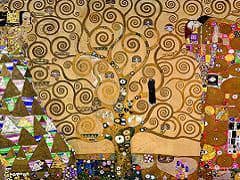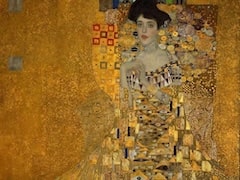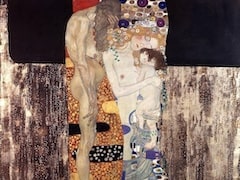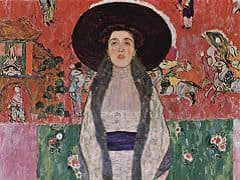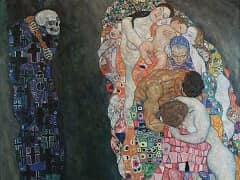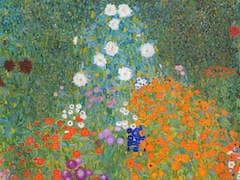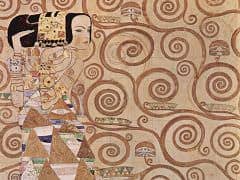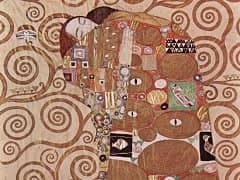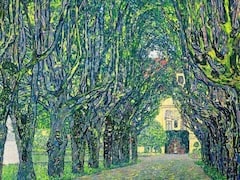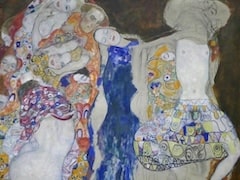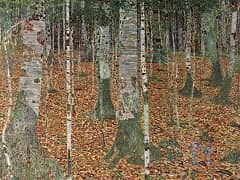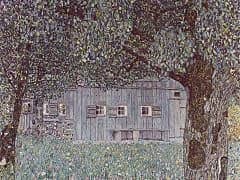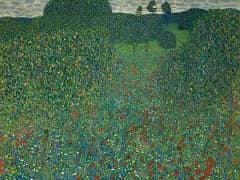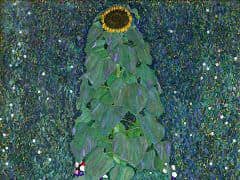Portrait of Baroness Elisabeth Bachofen Echt, 1889 by Gustav Klimt
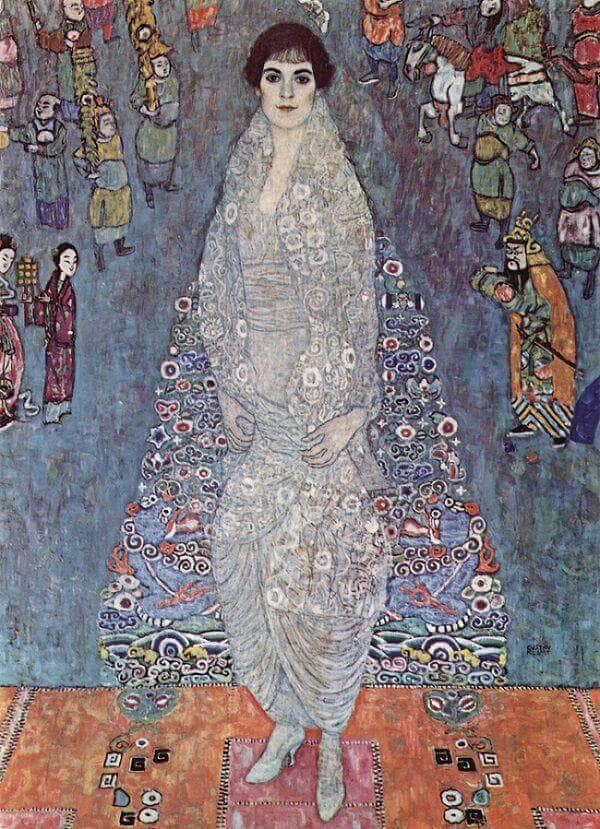
Elisabeth Bachofen-Echt was the daughter of August and Serena Lederer, Klimt's most important patrons. The family's collection eventually grew to include some fifteen canvases by the artist, among them an 1899 portrait of Serena - described by those who knew her as the best-dressed woman in Vienna - and a 1915 painting of her mother, Charlotte Pulitzer, a relation of Joseph Pulitzer, founder of the famous prize for writing. Elisabeth was twenty years old in 1914, when Klimt began the preparatory studies for the portrait he would complete some two years later. In almost all Klimt's late portraits, he chose a standing pose and used a "horizon-line" approach to divide the background into two planes. In the Bachofen-Echt portrait, the line of demarcation is lower, so that the illusion of a landscape setting is diminished, though as in Klimt's landscapes, the horizontal and vertical planes can easily be read as two perfectly flat bands of color. Elisabeth's stance is echoed by a triangular configuration similar to that in the Primavesi painting, but this shape is here placed against the back wall rather than on the floor, so that any feeling of perspectival distance it may create is automatically cut short, snapped back to the foreground by the woman's face, which forms the triangle's apex. Like the Primavesi portrait, this one amply evidences the artist's ability to manipulate space in order to enhance his sitter's presence.
The use of concrete oriental motifs - which were to become increasingly pronounced in Klimt's subsequent work - was an important innovation in the Bachofen-Echt picture. The influence of the Orient in compositions such as Judith and the Head of Holofernes has already been noted. What distinguishes the later work is the extraction of isolated pictorial elements and their adaptation to Klimt's own idiosyncratic ends.


